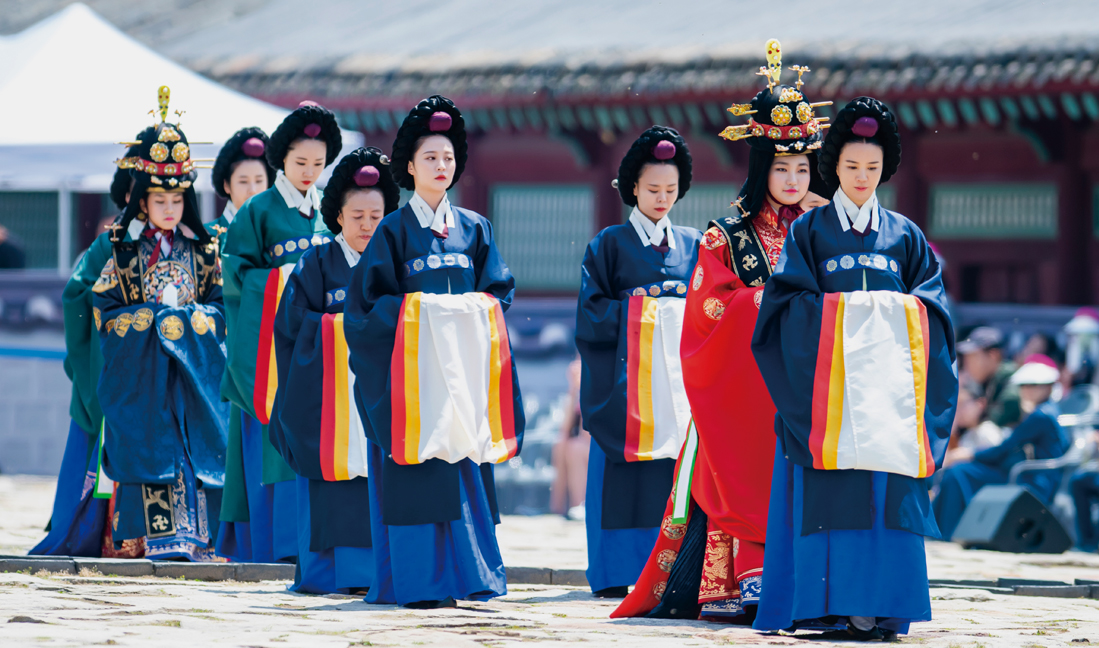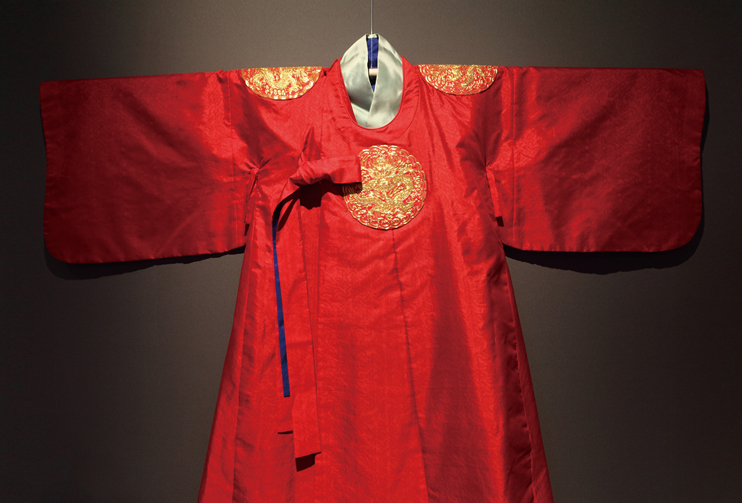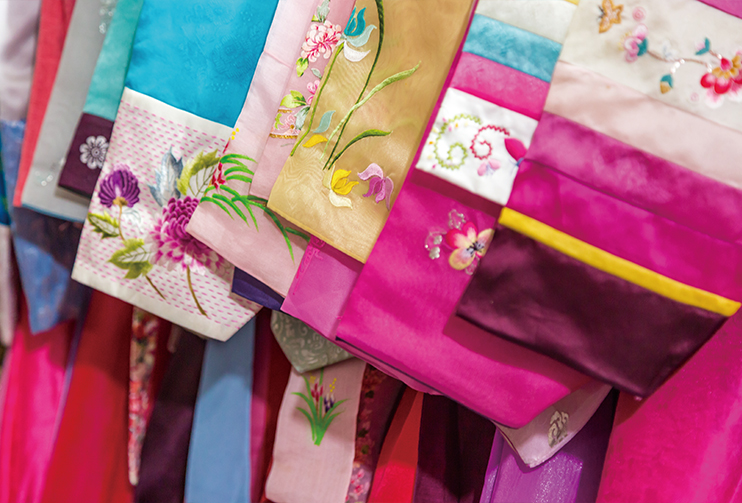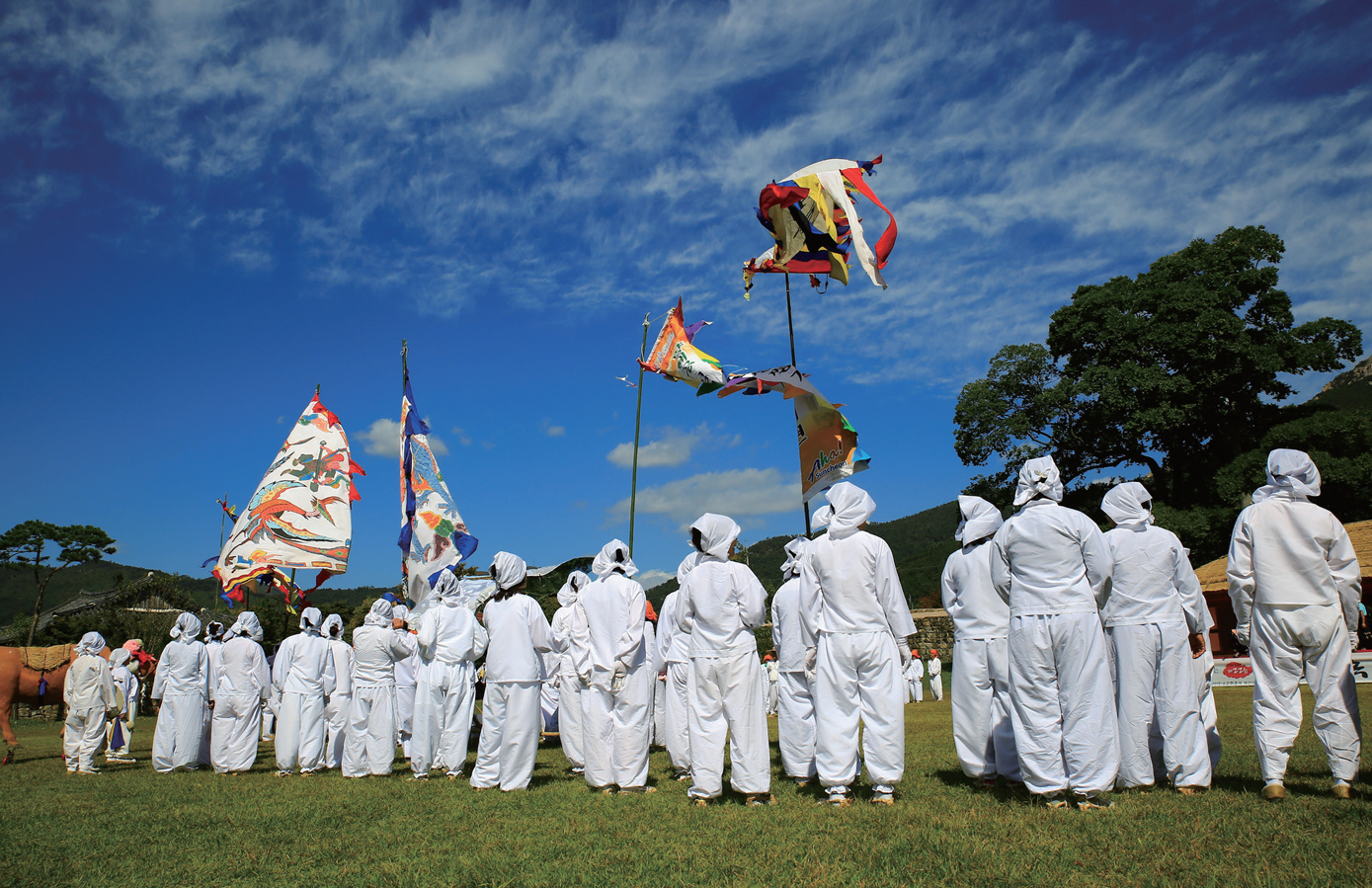STORY
Shades of History
Color’s Societal Roles
Colors have indicated social class and status throughout the millennia-long history of the Korean Peninsula. Specific colors were used in earlier times to identify societal constituents, the masses and the royalty, and the spirit of Korea’s ancestors lives on through colors on clothing and their meanings.
Written by• Kim Hyesoon
Historical texts like The Old Book of Tang of China cited the clothing systems of ancient societies on the Korean Peninsula. In the Baekje Kingdom (18 B.C.-A.D. 660), which had conventions deemed similar to those of the Goguryeo Kingdom (37 B.C.-A.D. 668), the king is known to have dressed in a wide-sleeved violet garment, blue silk pants, a white leather belt, a gold or black silk hat and black leather shoes. Other documents said Baekje courtiers wore colored belts (purple, red or blue) to distinguish their ranks. The clothing system of the Silla Kingdom in the sixth century strictly used colors (violet, red, blue and yellow) to classify courtier ranks. Even in the first half of the 10th century under the Goryeo Dynasty (918-1392), public officials had to wear violet, scarlet, red and green.

© shutterstock
Throughout shifts in political power, violet retained its high status. Depending on the scarcity of dye materials and the impression given by this particular hue, violet was considered the best color overall. At least in these ancient kingdoms, warmly tinted rather than wintry violet held high value. While theoretical explanations abound, one credible conjecture suggests blood’s allusion to vitality and spirits. Western historical clothing has reflected similar perceptions.
Violet maintained its royal status throughout the Joseon Dynasty (1392-1910) as well. The jeogori, the top garment of upper-class women, indicated by color whether she had a son (navy) and a living husband (violet). For wives in those times, the welfare and class of their husbands and sons determined the women’s own social reputations and honor. Violet was emblematic not only of the upper class but also royalty. Until the 19th century, Empress Eom-bi even wore a violet cover skirt to indicate her elevated rank, according to a maid of honor.
This is one of many instances showing the value of warm violet in the royal class. Joseon kings frequently donned red for occasions ranging from the performing of daily duties to attendance at ceremonies.

At the UNESCO World Heritage site Jongmyo Shrine, a palace ritual honoring ancestors is performed. The ceremonial attire worn by the Joseon princess has been restored from artifacts. © Getty Images Korea

The Joseon king wore the royal robe gonryongpo, which is now preserved at the National Palace Museum of Korea in Seoul. © shutterstock

Modern and colorful Hanbok can be easily rented at famed tourist sites like Hanok villages or traditional palaces. © imagetoday
Laypeople’s Color
White is another key color in Korean history. Considering the depth of the relationship between Hanbok (traditional attire) and the color, Koreans have long fawned over white. Linguist Choi Nam-seon wrote about the philosophical and practical reasons for white’s frequent use by commoners in Korea.
In contrast to the upper class, whose members displayed their status and identity through flashy colors, the public opted for white. Simplicity of choice for the relatively time-constrained commoner class was far from the only reason, and to assume that the public lacked the technique or time to dye their own garments would be inaccurate. Korean folklore has tales featuring the fading or bleaching of colors to further whiten clothes during washing. Though the Goryeo and Joseon dynasties banned white clothing under national law, the people rarely observed the rule. Seeing that lye-based bleaching techniques were subsequently honed and transmitted, general sentiment seemed to have had a firm preference for white. During Japanese colonial rule of Korea, white clothes were also prohibited allegedly for sanitary reasons, but this rule also went unheeded. In a way, wearing white could be seen as unspoken resistance against the occupying force.
Where did this penchant for white originate? A recent dissertation by Choi Jee-hee argues that ancient Koreans customarily used white to represent the nation. If true, this means that the people maintained a simple practice traceable to their roots, namely flaunting a color to affirm their national identity.

In a reenactment of a traditional farmers’ performance, performers are clad in white, the color most frequently worn by Joseon’s laypeople. © pixta



















